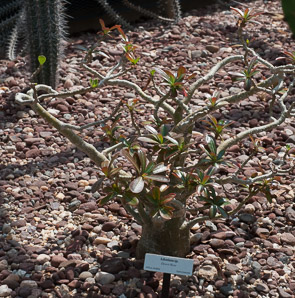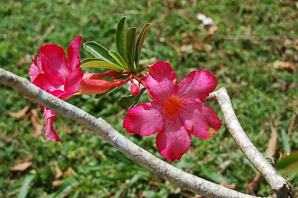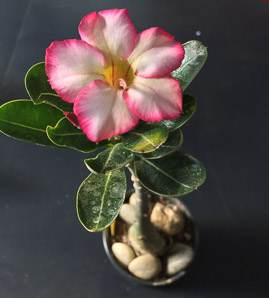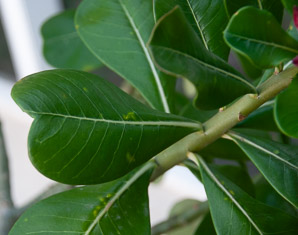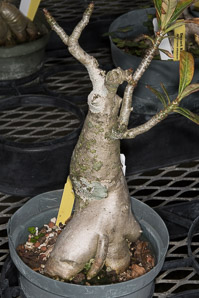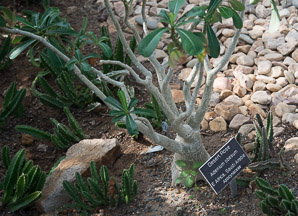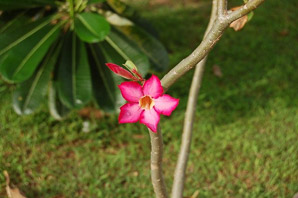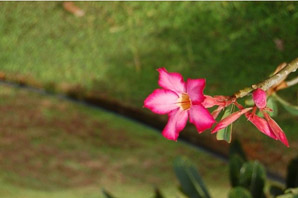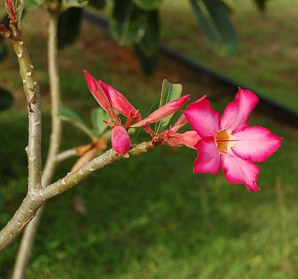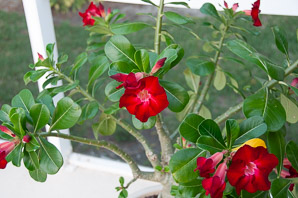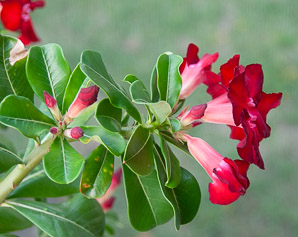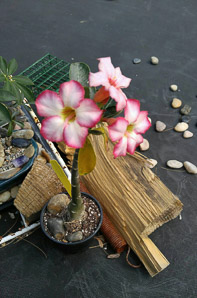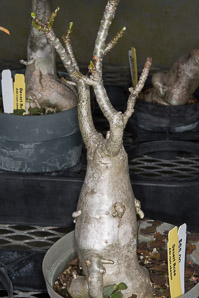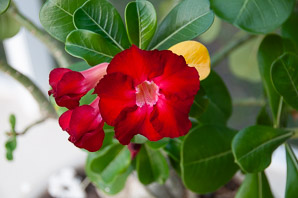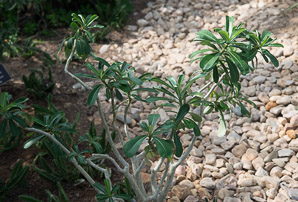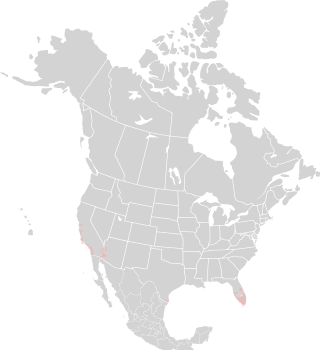
|
Adenium obesum (Forssk.) Roem. & Schult. Desert rose, sabi star, kudu, mock azalea, impala lily
Desert rose is native to tropical, subtropical, and desert regions of Africa. It does not occur in North America, but it is popular as a house plant or bonsai. Plants: Desert rose has a thick, swollen base that tapers upward, producing several smooth branches. This is a drought deciduous evergreen, meaning that is has leaves year-round, except in periods of extended drought. Then it drops them to reduce water loss. Plants are 3-13′ (1-4 m) in height. Leaves: Leaves are succulent—thick, leathery, and water-retentive—and arranged in spirals. They are obovate or elliptic, on short petioles. Each leaf is 3-4″ (8-10 cm) × 1-1¼″ (3-3.5 cm). Flowers: Flowers are tube-shaped, pink-to-red, opening into a five-petaled star 1½-2″ (4-6 cm) in diameter. Online References:
4/6/2011 · Howard Peters Rawlings Conservatory & Botanic Gardens, Druid Hill Park, Baltimore, Maryland 7/17/2007 · Guam · By Jacquelyn Boyt Bonsai · 6/13/2017 · Townsend, Massachusetts · By Timothy Naumann A cultivar. · 4/10/2015 · MacDonald‘s, Marco Island, Florida · ≈ 7 × 5″ (19 × 12 cm) Bonsai. · 12/12/2016 · Bonsai West, Littleton, Massachusetts · ≈ 8 × 12″ (20 × 31 cm) 8/31/2013 · Lewis Ginter Botanical Garden, Richmond, Virginia 7/7/2007 · Guam · By Jacquelyn Boyt
Adenium obesum description by Thomas H. Kent, last updated 14 Sep 2023. © FloraFinder.org. All rights reserved. |
7/29/2023 · Guam · By Jacquelyn Boyt 7/7/2007 · Guam · By Jacquelyn Boyt A cultivar. · 4/10/2015 · MacDonald‘s, Marco Island, Florida · ≈ 1½ × 1′ (49 × 32 cm) A cultivar. · 4/10/2015 · MacDonald‘s, Marco Island, Florida · ≈ 9 × 6″ (22 × 15 cm) 7/29/2023 · Townsend, Massachusetts · By Timothy Naumann Bonsai. · 12/12/2016 · Bonsai West, Littleton, Massachusetts · ≈ 8 × 12″ (20 × 31 cm) A cultivar. · 4/10/2015 · MacDonald‘s, Marco Island, Florida · ≈ 9 × 6″ (22 × 15 cm) 8/31/2013 · Lewis Ginter Botanical Garden, Richmond, Virginia Range: Zones 10-11:
|
